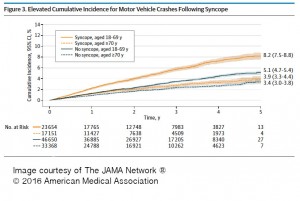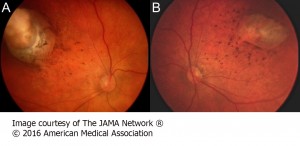EMBARGOED FOR RELEASE: 11 A.M. (ET) TUESDAY, FEBRUARY 16, 2016
Media Advisory: To contact the U.S. Preventive Services Task Force, email the Media Coordinator at Newsroom@USPSTF.net or call 202-572-2044. To contact editorial co-author Michael Silverstein, M.D., M.P.H., call Gina DiGravio-Wilczewski at 617-638-8480 or email ginad@bu.edu.
To place an electronic embedded link to this study and editorial in your story This link to the study will be live at the embargo time: https://jama.jamanetwork.com/article.aspx?doi=10.1001/jama.2016.0018 This will be the link to the editorial: https://jama.jamanetwork.com/article.aspx?doi=10.1001/jama.2016.0051
The U.S. Preventive Services Task Force (USPSTF) has concluded that the current evidence is insufficient to assess the balance of benefits and harms of screening for autism spectrum disorder (ASD) in children 18 to 30 months of age for whom no concerns of ASD have been raised by their parents or a clinician. The report appears in the February 16 issue of JAMA.
This is an I statement, indicating that evidence is lacking, of poor quality, or conflicting, and the balance of benefits and harms cannot be determined. An I statement is not a recommendation against screening but a call for more research.
Autism spectrum disorder is a developmental disorder characterized by persistent and significant impairments in social interaction and communication and restrictive and repetitive behaviors and activities, when these symptoms cannot be accounted for by another condition. In 2010, the prevalence of ASD in the United States was estimated at 14.7 cases per 1,000 children, or 1 in 68 children, with substantial variability in estimates by region, sex, and race/ethnicity.
The USPSTF reviewed the evidence on the accuracy, benefits, and potential harms of brief, formal screening instruments for ASD administered during routine primary care visits and the benefits and potential harms of early behavioral treatment for young children identified with ASD through screening. The USPSTF is an independent, volunteer panel of experts that makes recommendations about the effectiveness of specific preventive care services such as screenings, counseling services, and preventive medications.
Detection, and Benefits of Early Detection and Intervention or Treatment
The USPSTF found adequate evidence that currently available screening tests can detect ASD among children age 18 to 30 months, but found inadequate direct evidence on the benefits of screening for ASD in toddlers and preschool-age children for whom no concerns of ASD have been raised by family members, other caregivers, or health care professionals. There are no studies that focus on the clinical outcomes of children identified with ASD through screening. Although there are studies suggesting treatment benefit in older children identified through family, clinician, or teacher concerns, the USPSTF found inadequate evidence on the efficacy of treatment of cases of ASD detected through screening or among very young children. Treatment studies were generally very small, few were randomized trials, most included children who were older than would be identified through screening, and all were in clinically referred rather than screen-detected patients.
Harms of Early Detection and Intervention or Treatment
The USPSTF found that the harms of screening for ASD and subsequent interventions are likely to be small based on evidence about the prevalence, accuracy of screening, and likelihood of minimal harms from behavioral interventions.
Risk Assessment
Although a number of potential risk factors for ASD have been identified, there is insufficient evidence to determine if certain risk factors modify the performance characteristics of ASD screening tests, such as the age at which screening is performed or other characteristics of the child or family.
Treatment and Interventions
Treatments for ASD include behavioral, medical, educational, speech/language, and occupational therapy and complementary and alternative medicine approaches. Treatments for young children are primarily behavioral interventions, particularly early intensive behavioral and developmental interventions.
USPSTF Assessment
The USPSTF concludes that there is insufficient evidence to assess the balance of benefits and harms of screening for ASD in children age 18 to 30 months for whom no concerns of ASD have been raised. Evidence is lacking, of poor quality, or conflicting, and the balance of benefits and harms cannot be determined.
(doi:10.1001/jama.2016.0018; Available pre-embargo to the media at http:/media.jamanetwork.com)
Editor’s Note: Please see the article for additional information, including other authors, author contributions and affiliations, financial disclosures, funding and support, etc.
Note: More information about the U.S. Preventive Services Task Force, its process, and its recommendations can be found on the newsroom page of its website.
Editorial: Embrace the Complexity
“In rendering its determination of insufficient evidence for ASD screening, the USPSTF demonstrated its understanding of the real-world complexities of primary care and its commitment to be a rigorous, transparent arbiter of best available evidence,” write Michael Silverstein, M.D., M.P.H., of the Boston University School of Medicine, Boston Medical Center, Boston, and Jenny Radesky, M.D., of the University of Michigan School of Medicine, Ann Arbor, in an accompanying editorial.
“The ensuing debate around the findings of the USPSTF with respect to screening for ASD has thrown into relief the importance of this circumscribed but critical role. The USPSTF has delivered an important message, which should spur more research and enhance the knowledge base around universal ASD screening. The USPSTF embraced this issue in all its complexity. Physicians, other health professionals, policy makers, insurers, and other stakeholders should do the same.”
(doi:10.1001/jama.2016.0051; Available pre-embargo to the media at http:/media.jamanetwork.com)
Editor’s Note: Both authors have completed and submitted the ICMJE Form for Disclosure of Potential Conflicts of Interest and none were reported.
# # #




